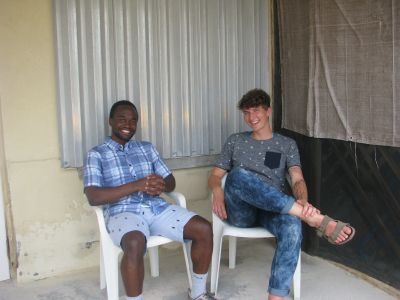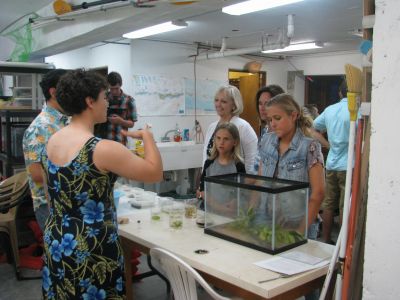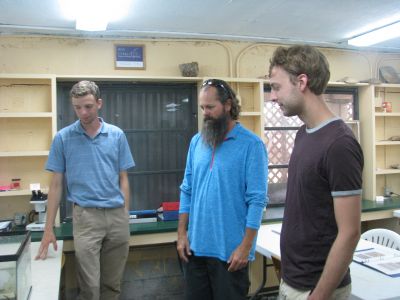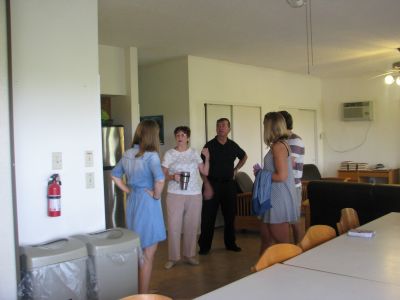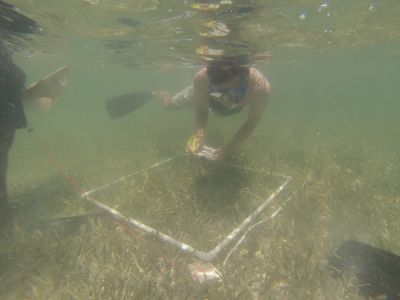Time is flying by down here in the Keys. It feels like just yesterday that students were learning how to snorkel in the seagrass beds of the bight. Now, with a little experience under their belts, it’s often tough to convince them to get out of the water!
This past weekend was full of activities that kept us out of the ocean at least temporarily. On Saturday morning, students took their lab practical, proving once and for all that they could distinguish their white mangroves (Laguncularia racemosa) from their red mangroves (Rhizophora mangle) and their hermit crabs (Clibinarius spp.) from their horseshoe crabs (Limulus polyphemus). White mangroves have large, visible sugar glands on the stems of their leaves, while red mangroves don’t, and hermit crabs look nothing like horseshoe crabs! For the remainder of the day, we cleaned around the lab and made a quick grocery run into Marathon. We ended the day by sharing a communal dinner of hamburgers and hot dogs and screening Finding Dory in the upstairs living space. After the practical in the morning, the nightcap helped the day feel a bit more like a Saturday.
Sunday saw the group head back to the Layton Baptist Church for another round of singing. Following the service, we ate lunch with the church (burgers and hot dogs again) before heading back to the station to host our own open house. At the suggestion of the film crew, who had observed a desire within the community to know more about what our program is doing, we set up stations around our lab and living space and opened our doors to the public. The film students put together a short video of our experience to show as well, which is linked below. Attendance from the community was unfortunately rather sparse, limited primarily to churchgoers, but those who came were excited to see our specimens and interact with our students. We had a blast too! Hopefully this kind of open house can become a tradition over the coming years. After the open house we clambered into our vehicles and headed off for an afternoon of exploring Key West. While Layton is a small, quiet town, Key West is 100% a bustling tourist town, and the change of pace was nice for the few hours that we were in town.
This week has put students back in study mode, with research groups making their final trips to the field to collect data. Groups visited Limetree Bay, the bight, Triton Flats, and the mangroves outside our station. It’s great to see so much science being done! Monday was also a perfect day to be on the water, with hot temperatures and no wind, leading to an impromptu night snorkel at Limetree Bay for those of us in need of a study break. We walked over in time to catch a gorgeous sunset over the water before hopping in with our flashlights to explore the ocean at night. After surprising all types of crustaceans (shrimp, crabs, and spiny lobster), we turned off our lights to experience the true spectacle of the evening: bioluminescence. Our movement, generated simply by swimming through the water, disturbed plankton suspended in the water column, prompting them to emit a dull glow. Hundreds of plankton lighting up along our arm and goggles in an otherwise dark sea was something close to magical, as if we were swimming through the stars. Not bad for a Monday.
After another full day of research and analysis today (Tuesday), we are down to our final two days on site. We are finishing up the course with the final exam tomorrow and student research presentations on Thursday. Stay tuned for a summary of their results!
-Jacob





